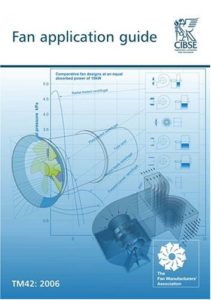Fan application guide
Fan application guide
Fan application guide considers the principles of air movement and the various fan types available in order to achieve the best results. The authors are all engineers with considerable experience in the fan industry. In the following pages, they discuss the principles and practice of air extract/supply system design, and offer guidance on fan selection to ensure that such systems perform their intended function efficiently.
Fans divided into two main categories: axial and centrifugal. There are some types which are hybrids with a foot in both camps but in general terms they divide easily into these two main groups.
Axial fans work by generating aerodynamic lift within the rotating blades. This is not strictly true in that aerodynamic lift forces generated on the blades only act to apply a thrust load on the impeller; it is the equal and opposite force that is important, that is the force imparted by the blades on the air. To obtain a better understanding consider a simple plate in an air stream.
You can also Read ASHRAE Standard 211 – 2018 Standard for Commercial Building Energy Audits
Fan application guide Content
- How a fan works
![]()
- Fan laws and system resistance
- Fan selection
- Installation and system effects
- Fan control
- Parallel and series operation
- Acoustics
- Safety and maintenance
- References
- 1: Definitions and explanations
- 2: Airflow and pressure measurement
- 3: Information required for fan selection
- 4: Electric motors
- Index
Here the flow passing over the plate wing generates a lift force which acts to force the plate upwards. This can only happen if the air is made to deflect from its normal flow path and move downwards. Newton’s Law states that for every action there exists an equal an opposite reaction. In this case the upward lift force on the blade balanced by an equal and opposite force making the air flow downwards.


Comments are closed.